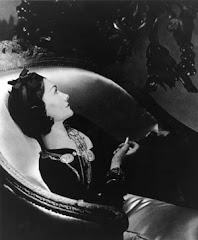My apologies for the lack of activity on this site. I arrived in Melbourne yesterday morning from Adelaide and did two bookshop readings, thanks to those readers who attended, particularly the lady from Budapest - it was a pleasure to meet you. I very much enjoyed the observation by a a member of the audience at Readings who said that in New York in the 1960s, when a Jewish woman reached 50 she was awarded a fur coat. And with that carapace around her shoulders, she demonstrated her status. We need to find a modern-day equivalent of the mink.
Meanwhile, those of you of a literary disposition may believe that writers are lovely, sensitive souls. After seven full days in the company of some of the most important writers in the world, I can tell you that the clash of egos, the arrogance, the selfishness, insecurity, the anxiety about pecking orders, is a sight to behold.
I can say no more, but if you are interested in reading authors whose private personalities actually match up to their prose, try here.
Thursday, 6 March 2008
Hello world
Posted by
Linda Grant
at
20:04
![]()
![]()
![]()
![]()
Labels: about the site, Literature
Subscribe to:
Post Comments (Atom)

6 comments:
Writers’ festivals may show off writers at their status-anxious worst as you note, but your talk at Readings in Melbourne was a real pleasure..for its depth, breadth, and generosity. I’m the member of the audience, at Readings, who mentioned my own short story ,Mink-Tales, and the ceremonial role of ‘the mink’ in 1960s Jewish New York. There was a rite de passage in the Eisenhower and Kennedy years, for assimilated, middle-class Jewish women. It had to do with fur coats: acquiring one, flaunting it, anchoring it in your life and your changed relationship to your girlfriends. The mink--it is always the mink--indicated a solid marriage, status as the adored one, the fact that you were not young but still to be admired, and a certain prosperity. Even the families of union leaders, as ours was, sought the mink.
Your blog asks what we can use to for a modern replacement of the mink. I think that’s a hard one…one aspect of what ‘the mink’ stood for in the 1960s was the husband’s proprietary pride in his wife, and willingness to buy her an expensive and public demonstration of his pride and possessiveness. Don’t think we want to reproduce that, these days. But the other components of the mink’s role: as a symbol easing women into middle age with style and status…those, we could work on.
Carla Lipsig-Mumme
Melbourne and Toronto
Carla - I'm not sure that it was just in the 1960s that "the mink" was the object of choice among Jewish wives who had "made it". My grandfather was a furrier in New York in the 20s, 30s and 40s (he followed the money to Hollywood in the 50s and 60s)and one of my father's oft-quoted stories was about my grandfather's trying (many times without success)throughout his business life in New York City to get "rich middle aged men" to choose something other than mink for their "rich, middle aged, stout wives". He felt that making something tailored in sheared beaver, or broadtail or Persian lamb would be more attractive than a mink coat, which he referred to as "a fur bag".
My mother had, and I still have, a Persian broadtail with a white mink collar.
You've arrived in Melbourne during Fashion Week!
Linda - you are calling it "persian broadtail" - my dad always referred to them as two different things, as if they were, at least qualitatively, two different types of fur but I might have that wrong. I've seen coats like you described like that with the mink collar. I have a coat that my grandfather made for one of my great aunts, but it's from the 30s - it has a huge persian lamb collar that flipped up and buttoned. He really did hate mink for some reason - I think from a furrier's perspective, having to "open up" and piece all of those little skins was a pain in the neck and very labor intensive, whereas persian lamb, especially was something that came in one big piece and you did not have to do so much piecing. The other thing was, for him, working with persian lamb was more interesting - his specialty was matching skins and he used to go to great pains to put the lamb skins together in such a way that the curls made something he called "flowers", which he saw as his artistic contribution to the coat, I guess.
Aw, why can't you "say no more"?
desertwind
PS - I've ordered your book, Linda!
Know that a lady of a certain age, dressed in her winter uniform of new black sweatpants topped off with black turtleneck and a fetching black beret, in a small house on a dirt road in the Mojave Desert, is looking forward to the read.
Post a Comment